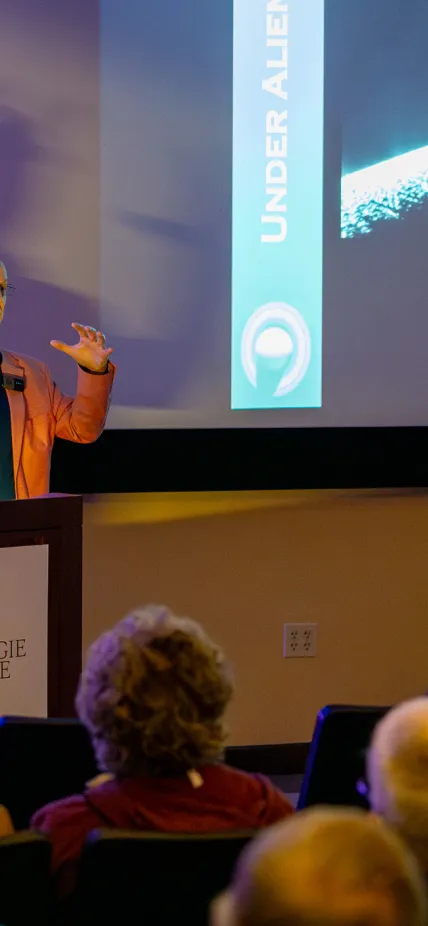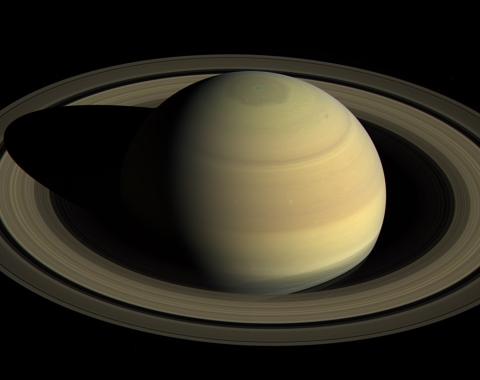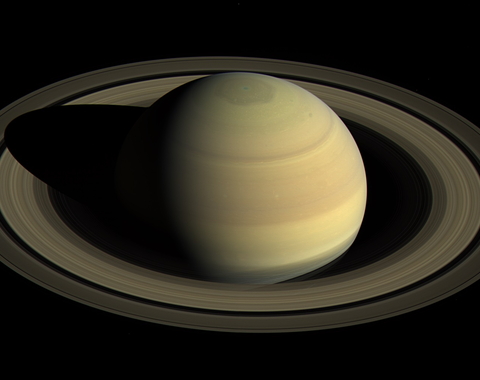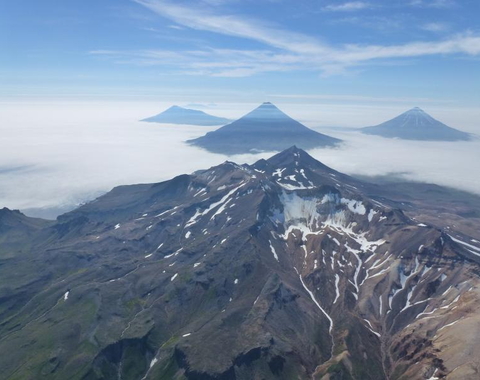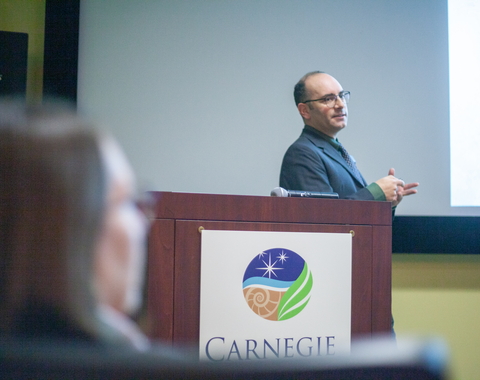Ever dream of surfing Saturn's rings? Catching a romantic hot air balloon through its atmosphere? Scuba diving on Enceladus? Well, Phil Plait—widely known as "The Bad Astronomer"—does too!
In a recent Neighborhood Lecture at the Carnegie Science Earth and Planets Laboratory, Plait took a full auditorium of space sightseers on a scenic trip to Saturn.
Blending humor and science, he described approaching the beringed planet and a handful of its most exciting moons, like Iapetus, Enceladus, and Titan—where methane lakes may support life. Plait also emphasized Saturn’s role as a natural laboratory for understanding planetary formation, atmospheres, and the broader universe, highlighting how missions like Cassini have revolutionized our knowledge of Saturn and ourselves.
"We see ourselves when we look out there,” said Plait. "We learn about our planet by studying others. Sometimes, that knowledge is just cool—other times, it's critical.”
Watch the Recording:
Six Key Takeaways from Under Alien Skies
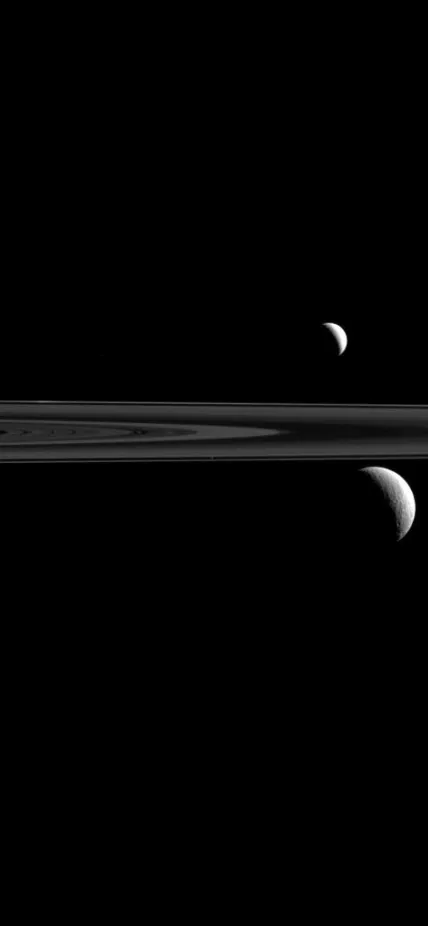
Saturn’s majestic rings stretch an astonishing 250,000 kilometers across the planet’s diameter, yet they are incredibly thin—just about 10 meters thick in some places. To put that into perspective, if you scaled an 8.5-by-11-inch sheet of paper up to the size of Saturn’s rings, the paper would actually be thicker than the rings themselves.
As Plait explained during the lecture, “In a lot of places, they are only a kilometer or two thick, and in some places, they are as narrow as 30 ft—not much taller than this room!" He continued, "To scale, they are flatter than a piece of paper."
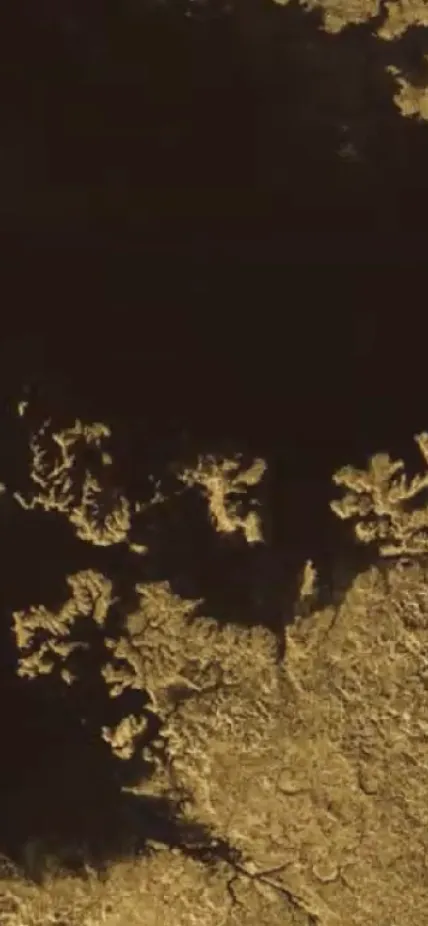
Titan, Saturn’s largest moon, has an atmosphere and surface features that look a lot like Earth’s, but instead of water, Titan’s lakes, rivers, and rain are made of liquid methane. At the frigid temperatures on Titan, methane acts much like water does on Earth—evaporating from lakes, forming clouds, and raining back down.
Plait considered, “The water cycle may be partly responsible for life on Earth, and [on Titan] you have the same thing, plus loads of carbon.” He added: “We’re carbon-based, right? Here’s all the carbon you could want. So, could there be carbon-based fishies swimming in the lakes of Titan?”
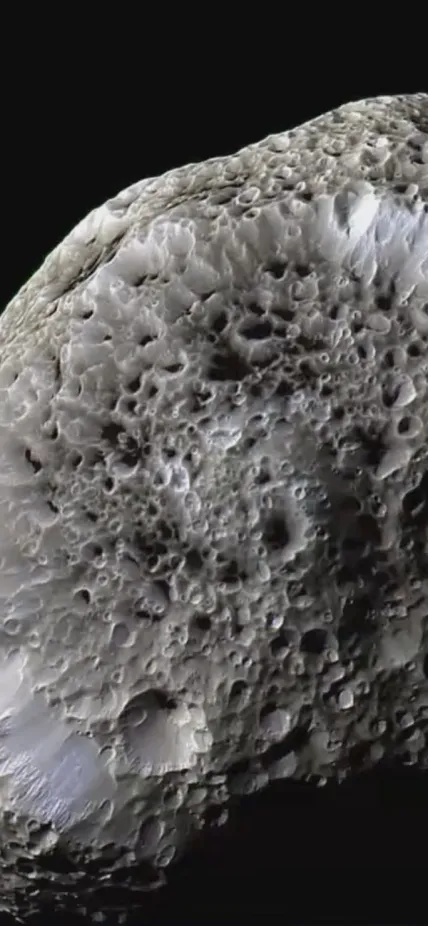
Saturn’s moon Hyperion stands out for its porous, sponge-like appearance. This unusual moon is mostly water ice and extremely low density, meaning it absorbs impacts instead of shattering like other moons might.
“It looks like a giant ball of Styrofoam that somebody has punched, and it looks like that because it essentially is a giant ball of styrofoam that somebody has punched,” Plait explained.

Saturn is the lowest-density planet in the Solar System. Composed primarily of hydrogen and helium, the gas giant’s average density of around 0.7 grams per cubic centimeter makes it the only planet in our Solar System that is less dense than water (1 gram per cubic centimeter).
As Plait pointed out, “That means if you had a bathtub big enough and you put Saturn in it, it would float." He continued, joking: "But it would leave a ring!”
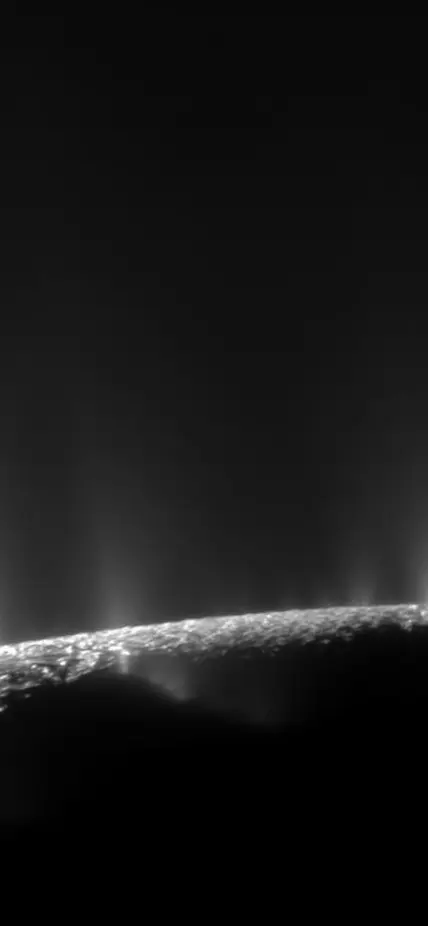
One of the most surprising discoveries from the Cassini mission was that Enceladus, a tiny moon of Saturn, has active water geysers that shoot hundreds of kilometers into space. These geysers erupt from cracks in the moon’s icy surface, hinting at a subsurface ocean beneath the ice.
“Cassini captured water geysers erupting along the ‘tiger stripes’—hundreds of kilometers high, some fast enough to escape the moon entirely,” Plait noted during the talk. “This was a surprise, nobody expected this.”
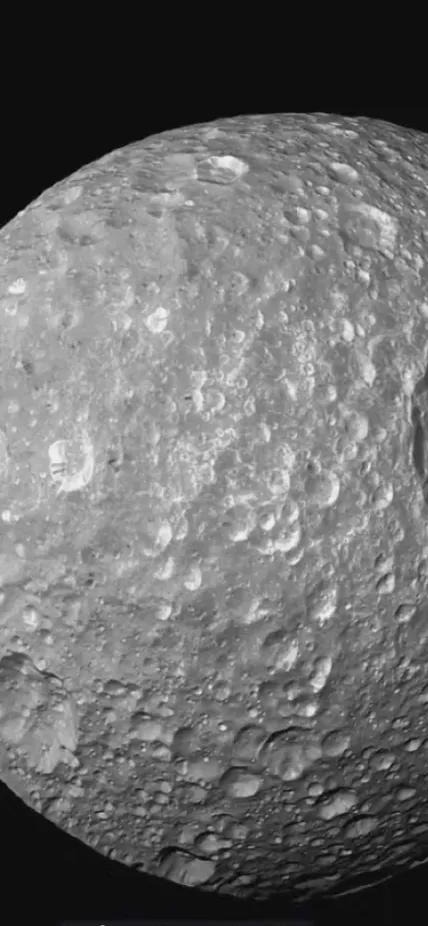
Mimas, one of Saturn’s moons, bears an uncanny resemblance to the Death Star from Star Wars due to its massive crater, Herschel. This giant crater is about as big as it can get without breaking the moon apart.
As Plait remarked, “Whenever I post a picture of Mimas, someone will reply, ‘That’s no moon."

More from Phil Plait
If you were fascinated by Dr. Phil Plait’s talk, you’d love his latest book, Under Alien Skies. Plait takes readers on a virtual space journey, exploring what it would be like to stand on other worlds, from Saturn’s rings to the surface of Pluto and beyond.
You can purchase Under Alien Skies or subscribe to Dr. Phil Plait’s newsletter for more information on his work and upcoming projects.
